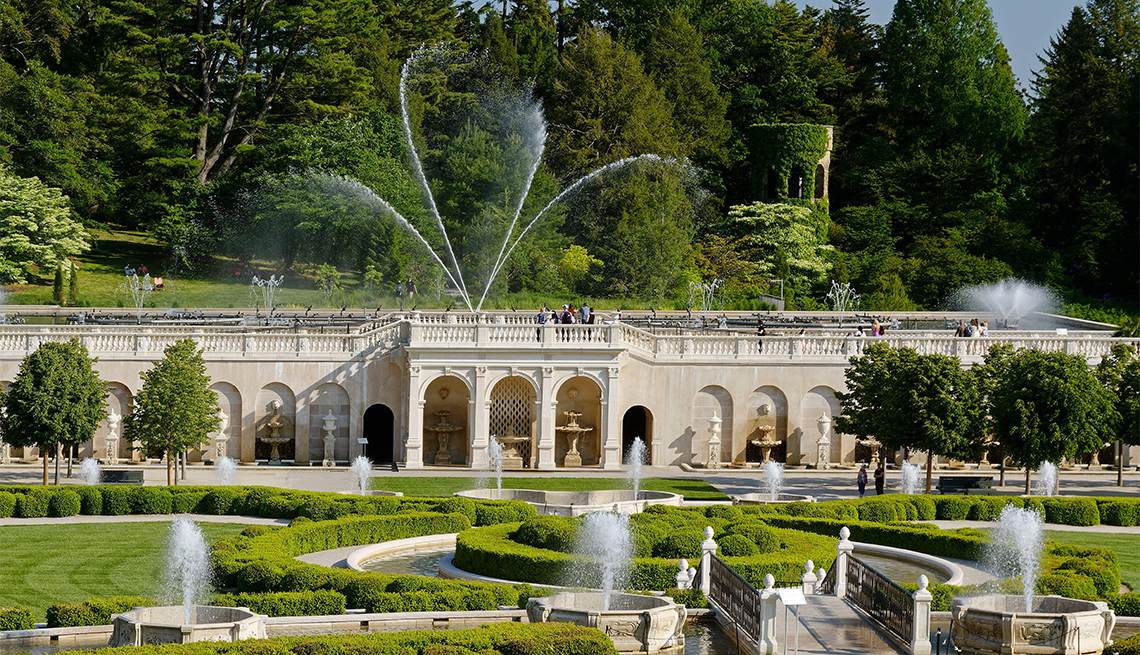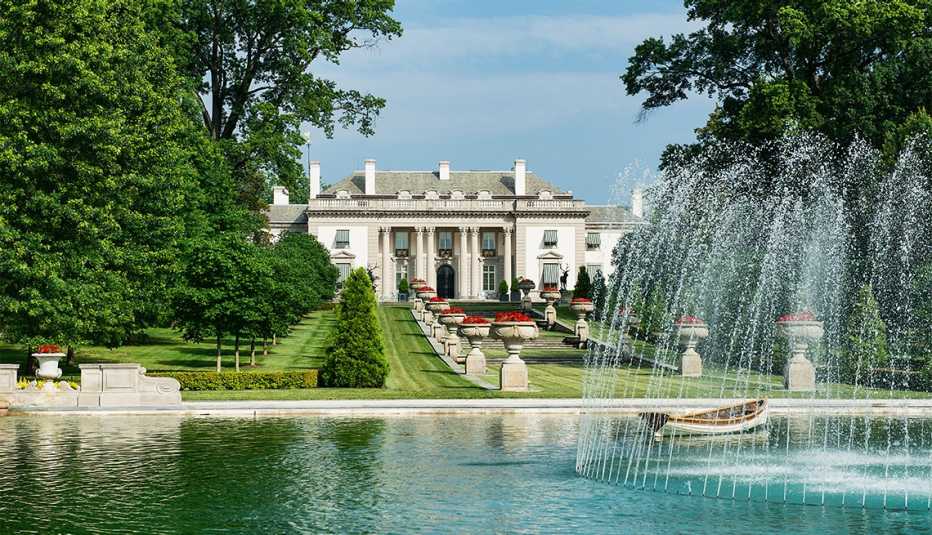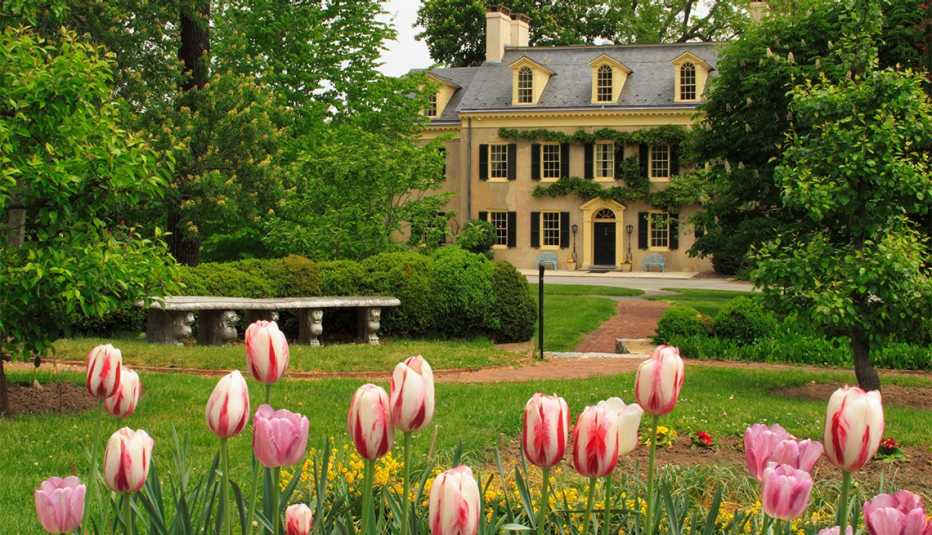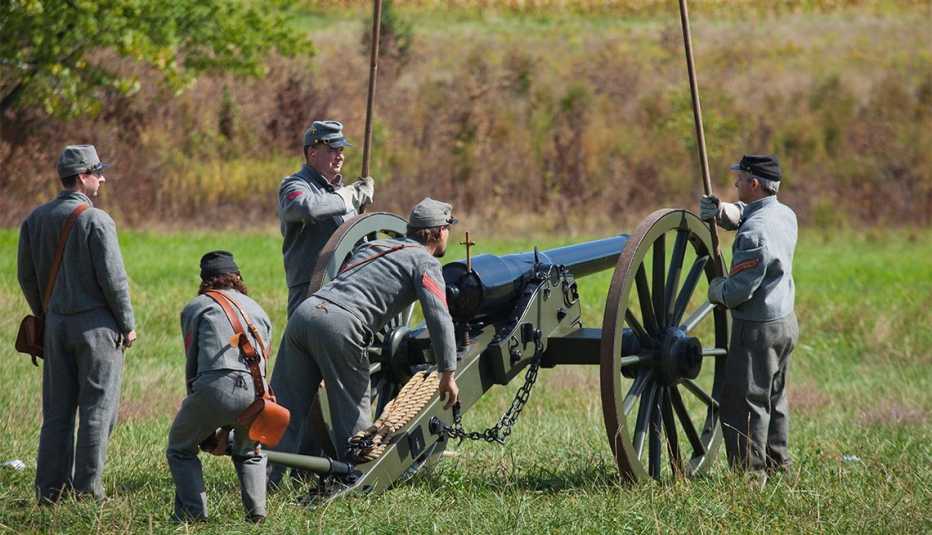AARP Hearing Center
An easy drive from Philadelphia, the Brandywine Valley’s scenic hills, waterways, gardens, estates and art collections make for an ideal spring or summertime getaway. This seductive rural enclave straddling the Delaware and Pennsylvania lines showcases the links between wealth and philanthropy, industrial history and decorative arts, Europe and America, art and the landscape that continues to inspire it.
The Brandywine Valley is inextricably associated with the Wyeth family — three generations of artists whose work the Brandywine River Museum of Art celebrates. But the area also flaunts the heritage of a family of aristocratic industrialists, the du Ponts, whose forebears fled France in 1800 and earned an unlikely fortune from manufacturing gunpowder.
Where to Stay
Hotel Du Pont: This 217-room Italian Renaissance-style icon in downtown Wilmington is a classy and historic option. Amenities include a spa, gym and French brasserie, Le Cavalier, which replaced the hotel’s well-known Green Room in 2020. From $299
Inn at Mendenhall: This cozy 70-room hotel in Chadds Ford, Pennsylvania, one of Best Western’s BW Premier Collection properties, is convenient to the museums and gardens and boasts a popular fine-dining restaurant. From $114
Those gritty origins have spawned an unusual concentration of attractions. The original du Pont “black powder” plant, whose successor is the Wilmington, Delaware-based DuPont company, has been enshrined in the Hagley Museum & Library. Longwood Gardens, one of the nation’s premier botanical gardens, was a du Pont family gift. But the family’s legacy arguably reaches its apex in two magnificent estates just north of Wilmington and only about 5 miles apart, the Winterthur Museum, Garden & Library and the Nemours Estate. Both garbed in gardens, they illustrate the contrasting sensibilities of two du Pont heirs and their wives.
Both estates are just outside downtown Wilmington, and an easy day trip from Philadelphia — or, combined with some of the other sites mentioned below, a weekend getaway from New York, Washington, D.C., or beyond.

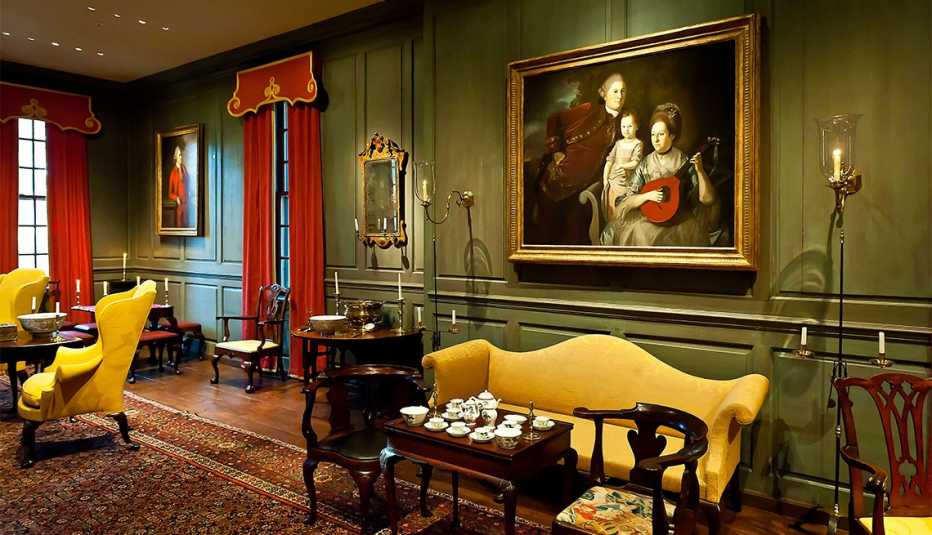
Winterthur Museum, Garden & Library
This estate was the longtime home of Henry Francis du Pont and his wife, Ruth Wales du Pont. H.F., as he was known, was a great-great-grandson of the immigrant patriarch, Pierre Samuel du Pont. He inherited a 50-room, stucco-covered French Provincial house carved into the hillside from his father, Henry Algernon du Pont, in 1926. Seemingly unscathed by the Great Depression, he added another 100 rooms between 1929 and 1931.
It’s home to his legendary American decorative arts collection, displayed in meticulously designed, almost-period-perfect settings. So esteemed was his taste that first lady Jackie Kennedy consulted him during her early 1960s refurbishing of the White House.
H.F. voraciously collected furniture, architectural elements, ceramics, paintings, silver and other items from the Colonial, Empire, Federal and Victorian periods. He owned 54 sets of china and 70 sets of custom-made linens, and household staff changed the draperies with the seasons. Decorations still rotate, with flowers, artificial fruit and place settings suggesting that the evening’s entertainment is poised to begin. Artifacts associated with titans of early American history, including silver tankards fashioned by Paul Revere and china owned by George Washington, are juxtaposed with du Pont family portraits and mementoes.
Exhibition galleries feature more of the collections and burrow more deeply into the history of the estate and the family. “Jacqueline Kennedy and Henry Francis du Pont: From Winterthur to the White House,” a new exhibition, tells the story of H.F. and the first lady collaborating to transform the White House into a home of grandeur as well as historical significance, with Winterthur as the inspiration. The exhibition runs through Jan. 8.
A champion breeder of Holstein Friesian dairy cattle, H.F. also was an enthusiastic horticulturist, cultivating 60 acres of naturalistic gardens along the estate’s hilly, winding roads. Fanciful architectural elements, known as follies, dot the grounds. A carpet of blue scilla, golden celandine and other early bulbs covers the March Bank, named for the month of its peak flowering. In April, a half-million daffodils sprout in cloudlike configurations — and cherry trees, forsythias and magnolias burst into pastel pink and brilliant yellow blooms. The eight-acre Azalea Woods, in shades of lavender, pink, red and white, are a May highlight.
You’ll find some 25 miles of paths and walking trails to stroll along, and visitors are welcome to bring food and drink for a picnic on the grounds (pets not permitted).
Address/contact: 5015 Kennett Pike, Wilmington; 302-888-4600; Winterthur.org
Getting there: Fly into Philadelphia International Airport, about 26 miles east of the museum. From East Coast destinations, you can take Amtrak to the Wilmington station — now the Joseph R. Biden Jr. Railroad Station — about 7 miles south of the museum. Winterthur parking is free.
Visit: Shuttles from the Visitor Center, or a five-minute walk, will take you to the mansion and the adjacent exhibition galleries. Garden tram tours (Tuesday to Sunday, 10 a.m. to 4 p.m., included with admission), also departing from the Visitor Center, offer a 30-minute overview of the estate’s history and its 1,000-acre grounds. Reservations are required for “A Closer Look” house tours ($10, available Tuesday to Sunday, 10 a.m. to 2 p.m.). You can also tour the house on your own.
Hours: Tuesday-Sunday, 10 a.m. to 5 p.m.; open daily around the winter holidays (check website for details); may be closed to the public for some weeks in January and February.
Admission: $22 for adults, $20 for 62-plus (with tickets good for two consecutive days). Purchase in person, online at Winterthur.org or by calling 800-448-3883, extension 7029.
Best time to visit: Weekday mornings to avoid crowds and have time for the house tour.































































